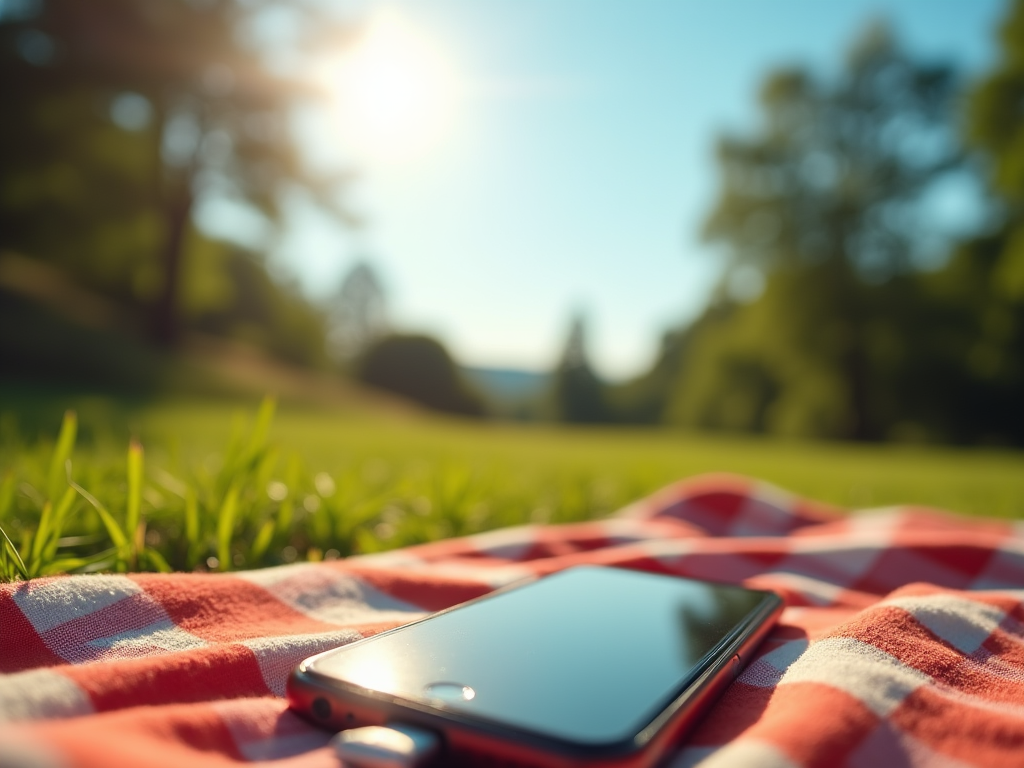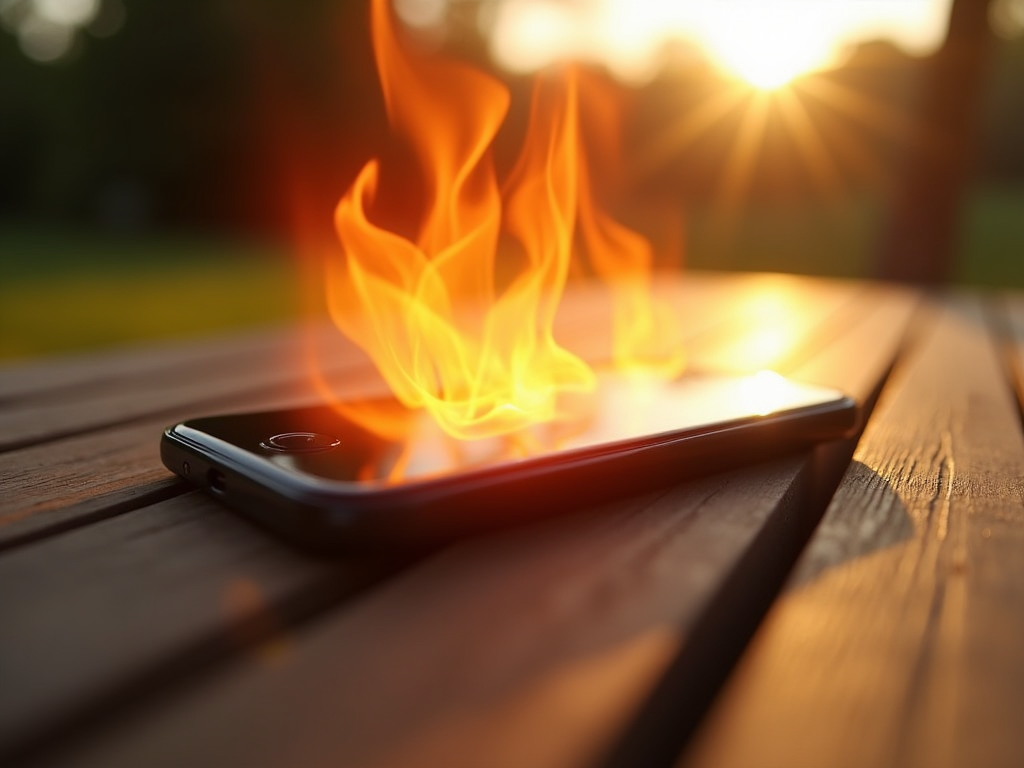
In a world where electronics are central to our communication and daily activities, many users often overlook the basic aspects of smartphone care. While enjoying the outdoors or taking a break, it can be easy to set down your phone without much thought about its surroundings. However, leaving a smartphone in direct sunlight presents numerous risks that can compromise its performance, lifespan, and security. Understanding these dangers is crucial for anyone who relies on their device for everyday tasks. The importance of keeping your smartphone safe from excessive heat cannot be overstated. This article will explain five compelling reasons why your smartphone must be shielded from the sun’s rays.
Overheating and Performance Issues

One of the most immediate effects of leaving your phone in the sun is overheating. Excessive heat can dramatically degrade the performance of the device. When your phone’s temperature rises beyond its optimal range, it begins to slow down. Tasks that were once seamless, like video streaming or gaming, may become a frustrating experience. Additionally, an overheated phone often struggles with basic functions, making it feel sluggish and unresponsive. Limiting exposure to sunlight is essential to ensure your device operates smoothly.
| Temperature (°F) | Effect on Phone |
|---|---|
| Above 95°F | Potential for overheating and performance decline |
| Above 104°F | Risk of serious battery damage and component failure |
| Above 113°F | Device may shut down unexpectedly to prevent further damage |
When a phone overheats, the battery tends to suffer the most. High temperatures can accelerate chemical reactions within the battery, leading to severe degradation. Users may notice a reduced capacity after a single exposure to scorching conditions. Over time, this can result in batteries that fail to hold a charge effectively. Furthermore, a compromised battery can lead to unexpected shutdowns, affecting your ability to stay connected. To mitigate these risks, it’s crucial to avoid leaving your phone under direct sunlight, especially for prolonged periods.
Damage to Internal Components

Another critical reason to keep your phone out of the sun relates to the internal components. Smartphones are complex devices with delicate circuit boards and sensitive graphics processors. These components rely on consistent temperatures for optimal functionality. When exposed to excessive heat, they can warp or deteriorate, leading to significant malfunctions. This damage often manifests as random reboots, software crashes, or failing hardware components. Such issues can lead to costly repairs or even necessitate complete device replacement.
In fact, the heat can weaken solder joints within the circuit board. As the components experience thermal stress, their reliability is significantly compromised. Users often find themselves dealing with glitches that can hinder daily productivity. Repair or replacement services can incur high costs, adding to the frustration. It’s essential to keep your device in a temperature-controlled environment to prevent these issues.
Screen Damage
Your phone’s screen is one of its most vulnerable parts, especially when exposed to the sun’s rays. Screens can develop noticeable defects if left in the heat for extended periods. High temperatures can cause the LCD to separate from the glass, which leads to blisters and distortion. Moreover, prolonged exposure can result in dead pixels or discoloration that diminishes the quality of your viewing experience. The investment in a modern smartphone deserves protection from conditions that degrade its primary display functionality.
These display issues not only affect aesthetics but also functionality. Users may find that touch responsiveness diminishes, making it difficult to use applications effectively. To summarize, potential defects can include:
- Dead pixels
- Discoloration
- Blistering
- Reduced touch sensitivity
Risk of Melting and Warping
It’s not just the electronics that can suffer; plastic parts and casings can also sustain damage. Under intense sunlight, plastic can begin to warp, which may impact how well your phone sits in your hand or your pockets. Some inferior quality cases may melt entirely, leading to a situation where your phone isn’t properly shielded. Such damning effects compromise both aesthetics and functionality. To avoid this issue, always store your phone in a shaded area instead of leaving it on hot surfaces.
Additionally, accessories like screen protectors can also be affected. For instance, the adhesive that holds a screen protector in place can weaken, leading to peeling or bubbling. Here are some common types of damage that can occur:
- Warped phone cases
- Melted charging cables
- Damaged screen protectors
Security Issues
Last but not least, overheating can lead to security concerns. When your phone gets too hot, you might find it unexpectedly shutting down. This can disrupt functionality, including locking mechanisms, making unauthorized access easier. An overheated phone may also prevent biometric features like fingerprints from working effectively. Users need to be vigilant not only about their devices’ physical integrity but also their data security. If your phone fails to lock or authenticate correctly, you might unwittingly invite vulnerabilities, exposing your sensitive information to potential threats.
In light of this, it’s important to be proactive about your phone’s safety. Consider these protective measures:
- Avoid leaving your phone in a closed car.
- Use a phone case that dissipates heat.
- Store your device in a shaded area when outside.
Conclusion
To maintain the longevity and performance of your smartphone, keeping it away from direct sunlight is crucial. From preventing overheating to safeguarding internal components, the risks of sun exposure are numerous. Whether it’s preserving battery life or securing your personal data, the benefits of avoiding the sun are clear. It’s a simple yet effective habit that can extend your device’s lifespan and ensure it continues to serve you well. Ultimately, taking care of your phone means taking care of your connection to the world around you.
Frequently Asked Questions
- What temperature can damage my phone? Generally, temperatures above 95°F (35°C) can be harmful.
- How do I know if my phone is overheating? Signs include extreme heat coming from the back of the device, throttling, or unexpected shutdowns.
- Can I use my phone in the sun if I keep it in my pocket? It’s better than leaving it exposed, but pockets can still trap heat; try to keep it in a cool area when not in use.
- What should I do if my phone overheats? Turn it off immediately and allow it to cool down in a shaded, ventilated area.
- Does humidity affect phone performance? Yes, humidity can contribute to device overheating and potential moisture damage.




